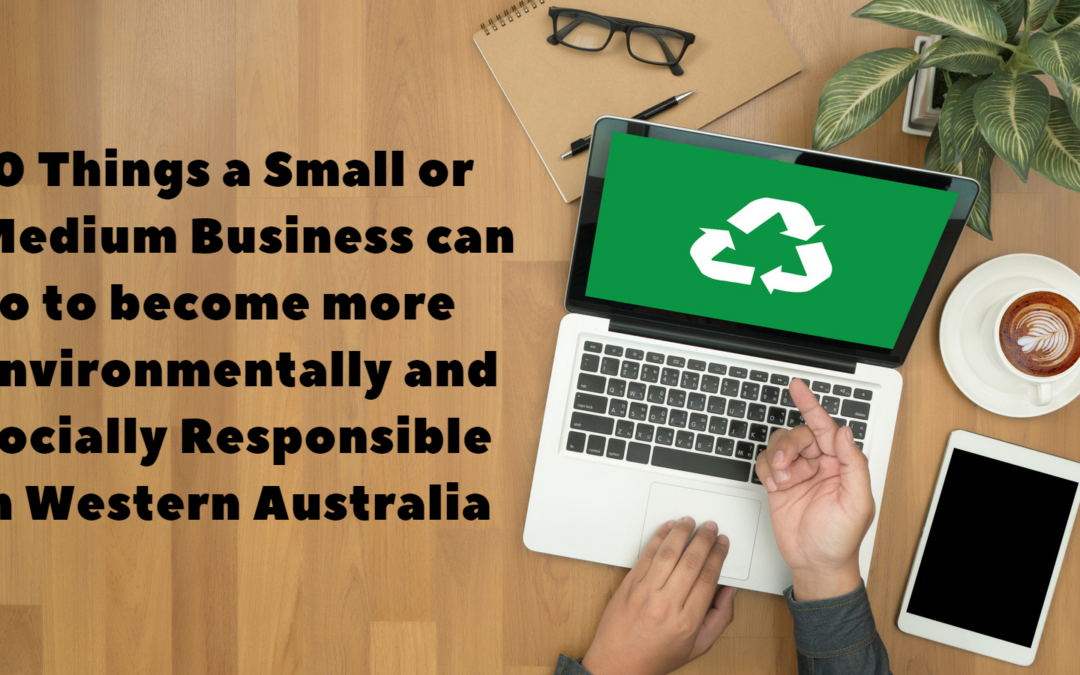Being an environmentally and socially responsible small to medium enterprise (SME) means:
- operating in a manner that minimises damage to the environment and benefits society;
- considering how and where your supplies come from;
- considering the effect your product or service could have on the environment and/or people; and
- reducing waste through your production, packaging, or end-of-life disposal. (Business QLD, 2022).
The benefits to your business of being environmentally and socially responsible can include:
- Attracting customers who want to buy products and services from an environmentally and socially responsible business.
- Attracting staff/suppliers who value products and services from an environmentally and socially responsible business.
- Building a positive standing within the community.
- Distinguishing your business from competitors.
- Reduced costs through aspects such as energy and supply efficiency and reduction in waste disposal (Business QLD, 2022).
In Western Australia, SMEs employ 41% of the private sector workforce and contribute to nearly 45% of the private sector economy (Small Business Development Corporation, 2022), meaning significant impacts can be made from efforts to become environmentally and socially responsible. In the remainder of this InSight we present ten things you can do to make your SME more Environmentally and Socially Responsible.
1. Review your supply chains.
Think about all of the components and supplies that go into making your product or service, things such as:
- Where do they come from? If it’s shipped from overseas, what are the costs and how much carbon dioxide equivalent emissions are generated? Could it be sourced locally?
- What is made from? Could it be made from materials that are recyclable, reusable and biodegradable?
- How is it made? Does it involve people? Does the country or business practice Fair Trade (i.e. pay their employees fair and liveable wages and have decent working conditions.)
You could set up policies and procedures for sustainability and determine whether your suppliers are willing to work towards these goals or whether alternative suppliers should be sought? (Small Business Development Corporation, 2020).
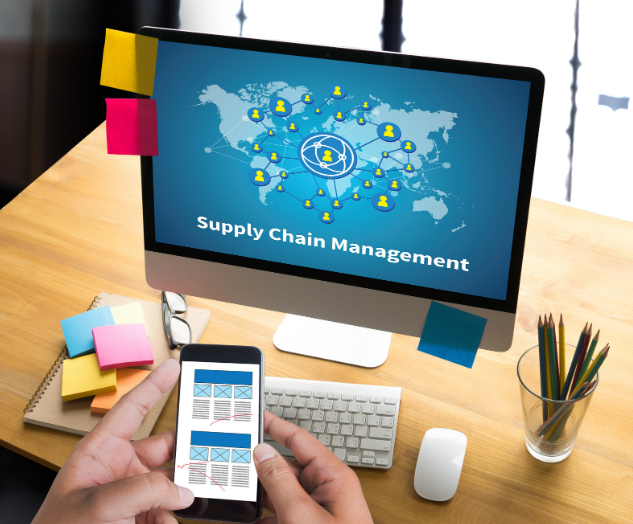
2. Move away from single-use/disposable items.
What items in your SME operations are only used once and then disposed of? Could they be replaced with a reusable product? Some examples of changes include:
- staff having access to reusable coffee cups, water bottles, crockery and cutlery;
- using refillable printer cartridges instead of disposable ones; and
- using rechargeable batteries instead of single-use ones.
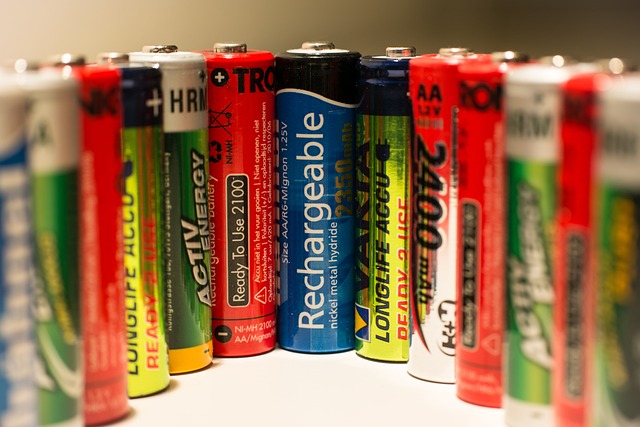
3. Go digital.
Could your SME go digital? There are digital options for payroll, invoicing and billing, banking, accounting, supply ordering and tracking, and rostering (DPMC, 2022). You could also consider your marketing. Could you switch to emails and social media instead of brochures, pamphlets and newsletters?
The Australian Government has an initiative called the Small Business Digital Champions Project which provides SME advice on going digital (DPMC, 2022). The first step is using the Digital Readiness Assessment Tool (Commonwealth of Australia, 2022) which helps you identify where you are doing well and where you could improve in the digitisation of your SME. The tool takes an average of ten minutes to complete.
4. Use products that are recyclable, reusable, and biodegradable.
When you are reviewing your supply changes (option 1), you could identify that some of your products could be swapped to those that are recyclable, renewable, and biodegradable. Some easy switches could involve:
- using recycled paper notebooks, photocopy paper and even toilet paper.
- using recyclable pens, etc.
- moving to recyclable, reusable or biodegradable packing.
- Switching to Biodegradable and non-toxic cleaning products. (Moody, 2020).
5. Recycle and Reuse.
Understand what recycling options are available to you from your local government (Different local governments have different options), and try to recycle and as much as possible. Typical options are paper, glass, plastic and metal, with some local governments offering batteries, old computer equipment, and light bulbs. You can search what can be recycled and where in Western Australia at https://recycleright.wa.gov.au/.
Think about if any of your waste products can be used by another company creating a circular economy. Some examples happening in Western Australia include coffee grounds being re-used as composting in community gardens, old donuts being used to make beer, and hessian bags from coffee roasteries being reused for sandbagging, pot planting, and tree protection (Donut Waste, n.d.).
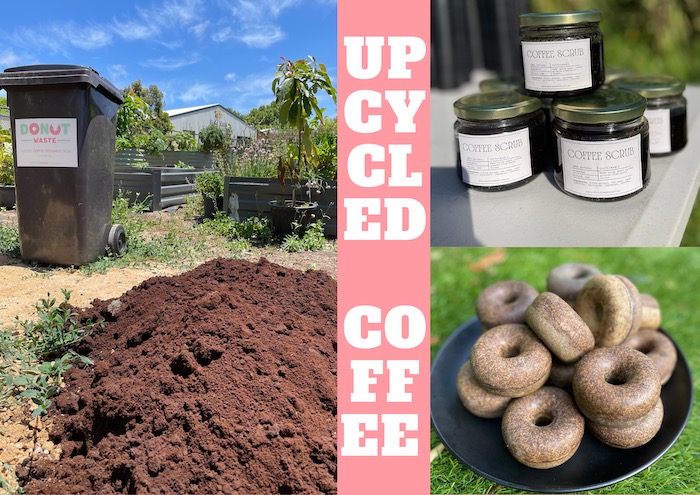
Coffee grounds can be composted or upcycled into products such as soaps and body scrubs. Source: (Donut Waste, 2022)
6. Implement Energy Efficiency.
You could reduce your energy bills and environmental footprint by becoming more energy efficient. Choosing energy-efficient lighting, heating, cooling, and appliances and encouraging behavioural changes such as turning off computers, printers, air conditioners, and lights when not in use. Appliances that aren’t switched off (i.e. in standby power mode) can account for 3% of your energy bill (Stein, 2019).
ClimateClever is an online, Science-based, and data-driven platform designed by a Western Australian start-up. It makes it easy and affordable for SMEs to measure and monitor their carbon footprint, reduce their emission and utility costs, and offset their emissions to become carbon neutral (Outhwaite, 2021).
7. Implement Water Efficiency.
Choosing water-efficient appliances and fixing drips and leaks. If your SME has a garden, choose water-wise plants to reduce the amount of irrigation required and install tanks to collect rainwater and grey water.
8. Allow Remote Working and Encourage Sustainable Transport.
Working from home reduces impacts from commuting; this option may not be viable for all SMEs, in which case an employee incentive scheme could see employees walking, running, or cycling to work, providing health benefits. Alternatively, staff could be offered public transport benefits to discourage private vehicle use. (Moody, 2020)
9. Change your packaging and delivery methods.
When you are moving to use products that are recyclable, renewable, and biodegradable (option 4) and you are thinking about if your packaging is recyclable or biodegradable, some options available are, including mycelium, corn-starch, wood pulp, and seaweed. Reusable packaging involves making it multifunctional so customers can use it again for something else (also resulting in free advertising).
An example of this practice is the SME Who Gives A Crap toilet paper. They package their toilet paper in patterned paper and encourage consumers to reuse it for wrapping and to share the end result on social media (Small Business Development Corporation, 2020). Here is an example of their wrapping being designed specifically for Christmas reuse.
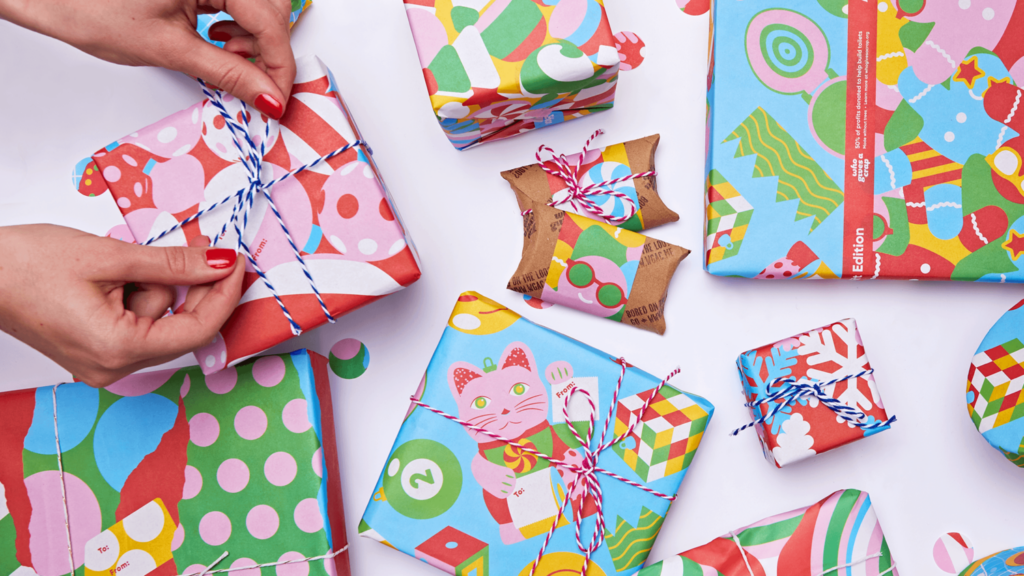
Also, try to aim for the least packaging possible, not only to save on materials but to reduce the amount of space taken up in the transport vehicle, thus reducing the impact of transport. Orders can be consolidated to reduce transport distances, or you could offer discounts for multiple orders, thereby encouraging bulk purchases.
10. Involve your community.
Let customers know about all your initiatives and encourage them to participate. Introduce a policy to support and employ local. Encourage staff to make suggestions. Some successful ideas include biking days, zero-waste days, bring-your-own lunch days, book, clothing, or plant swap, and park clean-up days. You could donate a percentage of your profits to an environmental programme or plant a tree for a goal number of products sold.
We hope this InSight helps make your SME more environmentally and socially responsible and has inspired you to start thinking about what might work for you. If your SME needs assistance with environmental solutions or is looking to incorporate sustainability into your projects, business, or service, please contact Integrate Sustainability via email enquiries@integratesustainability.com.au or call us on 08 9468 0338.
References
2017 BanksiaSustainability Awards. Sydney: The Banksia Foundation.
Bressan, A. (2014). Environmental and Social Responsibility within SME’s: Manegerial Perspectives from Western Sydney, Australia. Sydney: School of Business.
Business QLD. (2022, November). Becoming an environmentally friendly business. Retrieved from Queensland Government- Business Queensland: https://www.business.qld.gov.au/running-business/environment/environmentally-friendly#:~:text=operates%20in%20a%20sustainable%20manner,to%20reduce%20its%20carbon%20footprint
Commonwealth of Australia. (2022). Digitial Readiness Assessment Tool. Retrieved from Australian Government- Business.gov.au: https://digitaltools.business.gov.au/jfe/form/SV_eFZtHsAL8GhNRL8?ref=BGA
Donut Waste. (n.d.). Retrieved from Donut Waste: https://www.donutwaste.com.au/about/
Donut Waste. (2022). Perth’s start-up innovative solutions to your wastefil coffee habit. Retrieved from Donutwaste.com.au: https://www.donutwaste.com.au/perths-start-up-innovative-solutions-to-your-wasteful-coffee-habit/
DPMC. (2022). Australias Digital Economy- Digital SME’s. Retrieved from Australian Government- Department of Prime Minister and Cabinet: https://digitaleconomy.pmc.gov.au/strategy/priorities/digital-smes.html
Legacy for Future Generations. (n.d.). Retrieved from DeBortoli: https://www.debortoli.com.au/our-story/sustainable-wines
Moody, J. C. (2020, November 10). GreenBiz. Retrieved from Prioritising the Planet: https://www.greenbiz.com/article/prioritizing-planet-11-ways-small-businesses-can-become-more-eco-friendly
Nikdel, S. (2021, October 11). Inside Small Bussiness. Retrieved from How SMEs can take a multi-faceted approach to environmental sustainability: https://insidesmallbusiness.com.au/management/how-smes-can-take-a-multi-faceted-approach-to-environmental-sustainability
Nike. (n.d.). Nike Grind. Retrieved from Nike Grind: A Legacy of Innovation: https://www.nikegrind.com/about/
Nisha. (2021, July 7). Looka. Retrieved from 10 Ways to Make your Small Business more Sustainable: https://looka.com/blog/make-your-small-business-sustainable/
Oughton, C. A. (2021, July 27). Water Circular Economy at the Kwinana Industrial Area, Western Australia. Retrieved from Springer Link: https://link.springer.com/article/10.1007/s43615-021-00076-3#citeas
Outhwaite, A. (2021). Three WA Startups Tackling Global Climate Change Challenges. Startup News.
Sendle. (2022, January 6). Retrieved from Do Customers really care if your packaging is sustainable: https://blog.sendle.com/do-customers-care-about-sustainable-packaging
Small Business Development Corporation. (2020, February 11). Retrieved from 7 Ways to Make your Business Greener: https://www.smallbusiness.wa.gov.au/blog/7-ways-make-your-business-greener
Small Business Development Corporation. (2022). Small Business has Big Impact on the Economy.
Stein, L. (2019, December 9). ABC News. Retrieved from Should I Switch off power at the Wall?: https://www.abc.net.au/news/2019-12-07/how-can-i-reduce-my-power-bill/11675970#:~:text=According%20to%20the%20Department%20of,cent%20of%20your%20energy%20bill.
Victoria State Government. (n.d.). Retrieved from Lighting for households: https://www.energy.vic.gov.au/
Water Corporation. (n.d.). Retrieved from WaterWise Businesses: https://www.watercorporation.com.au/Waterwise/Waterwise-programs/Waterwise-businesses#:~:text=Waterwise%20developments-,Waterwise%20businesses,and%20use%20of%20new%20technology.
Welsh, G. (2018). Communication on Progress: Winya Indigenous Furniture. Winya Indigenous Furniture Pty Ltd, Australia.

